Weekly Index
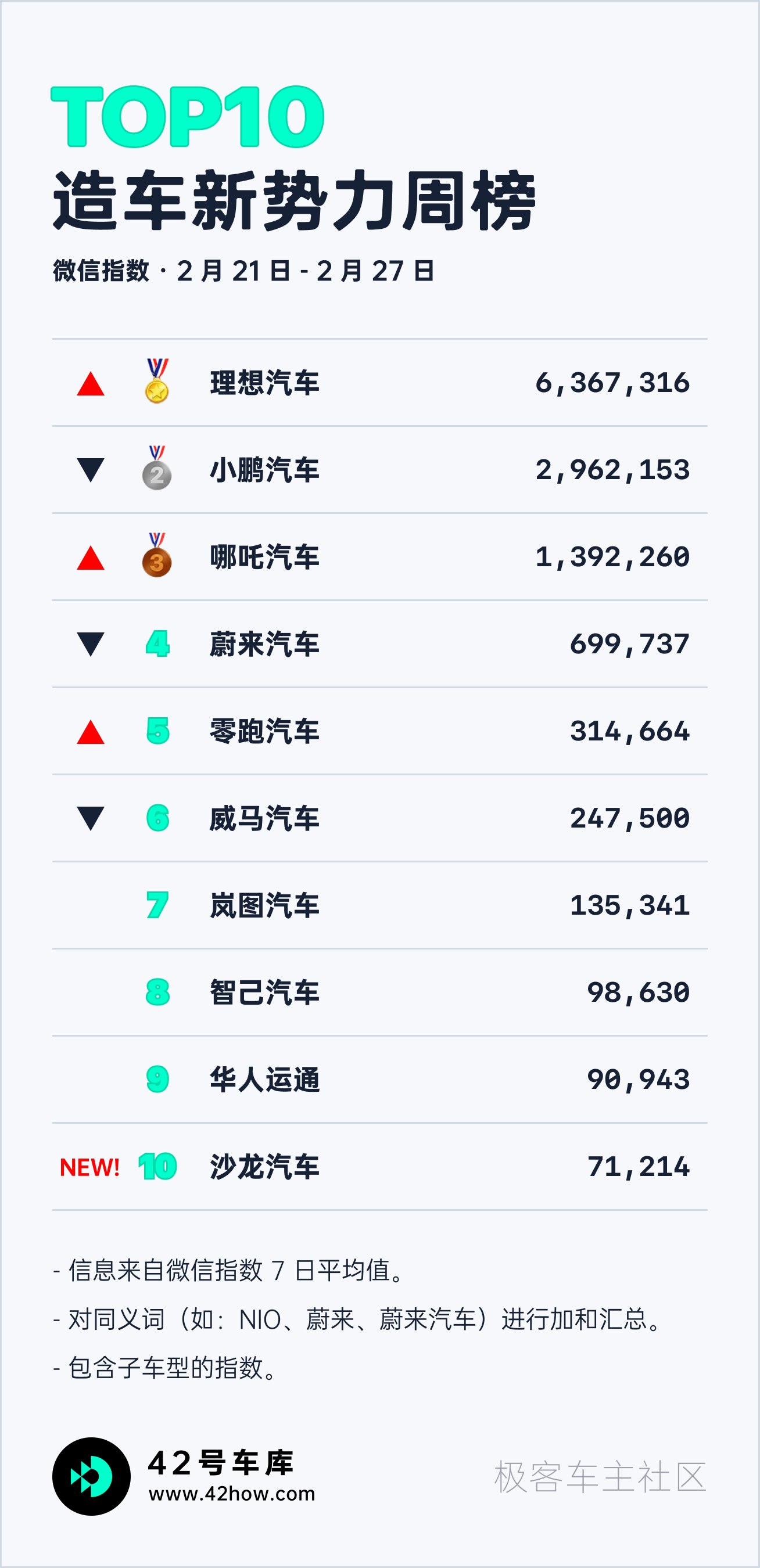
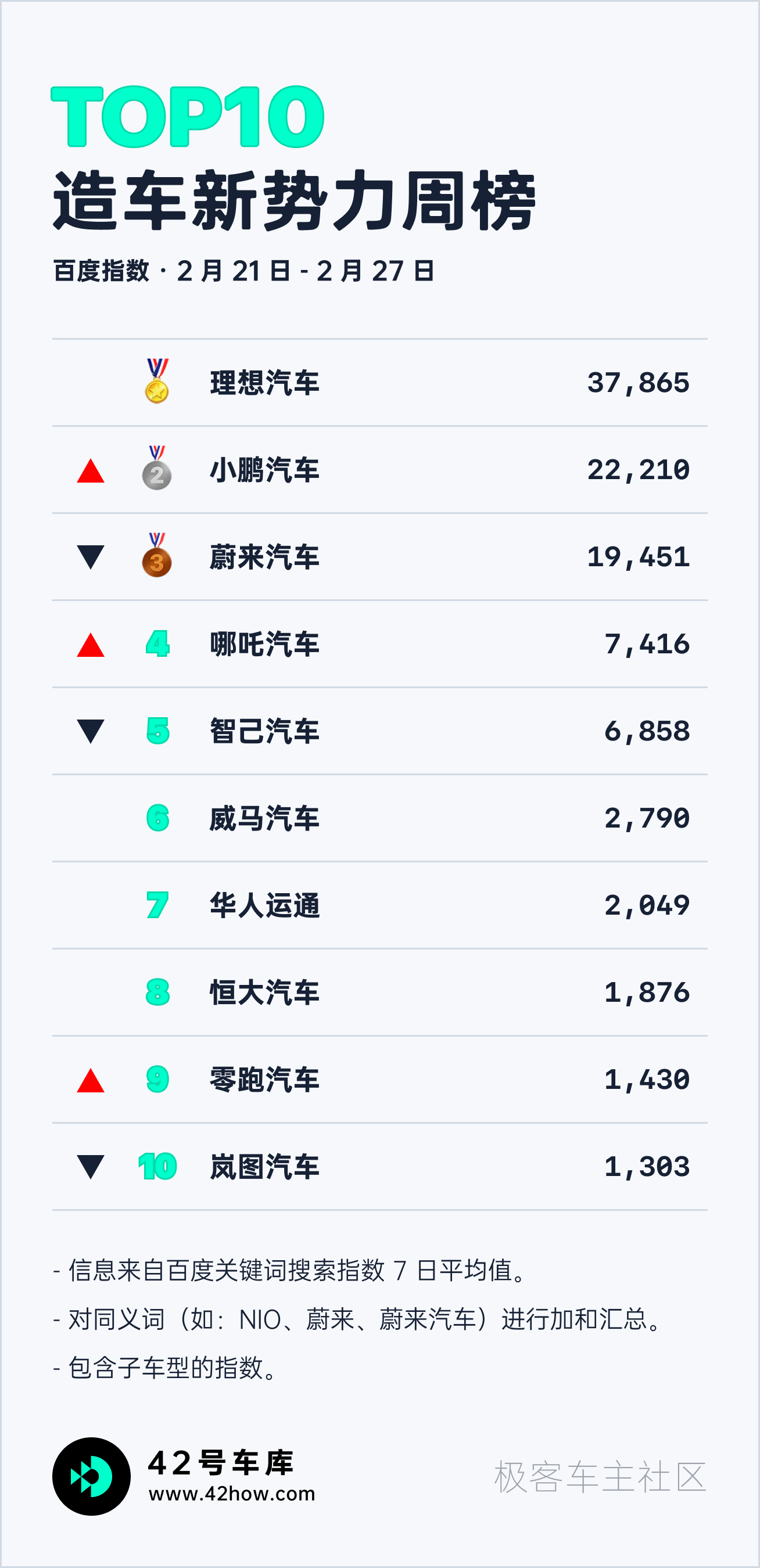
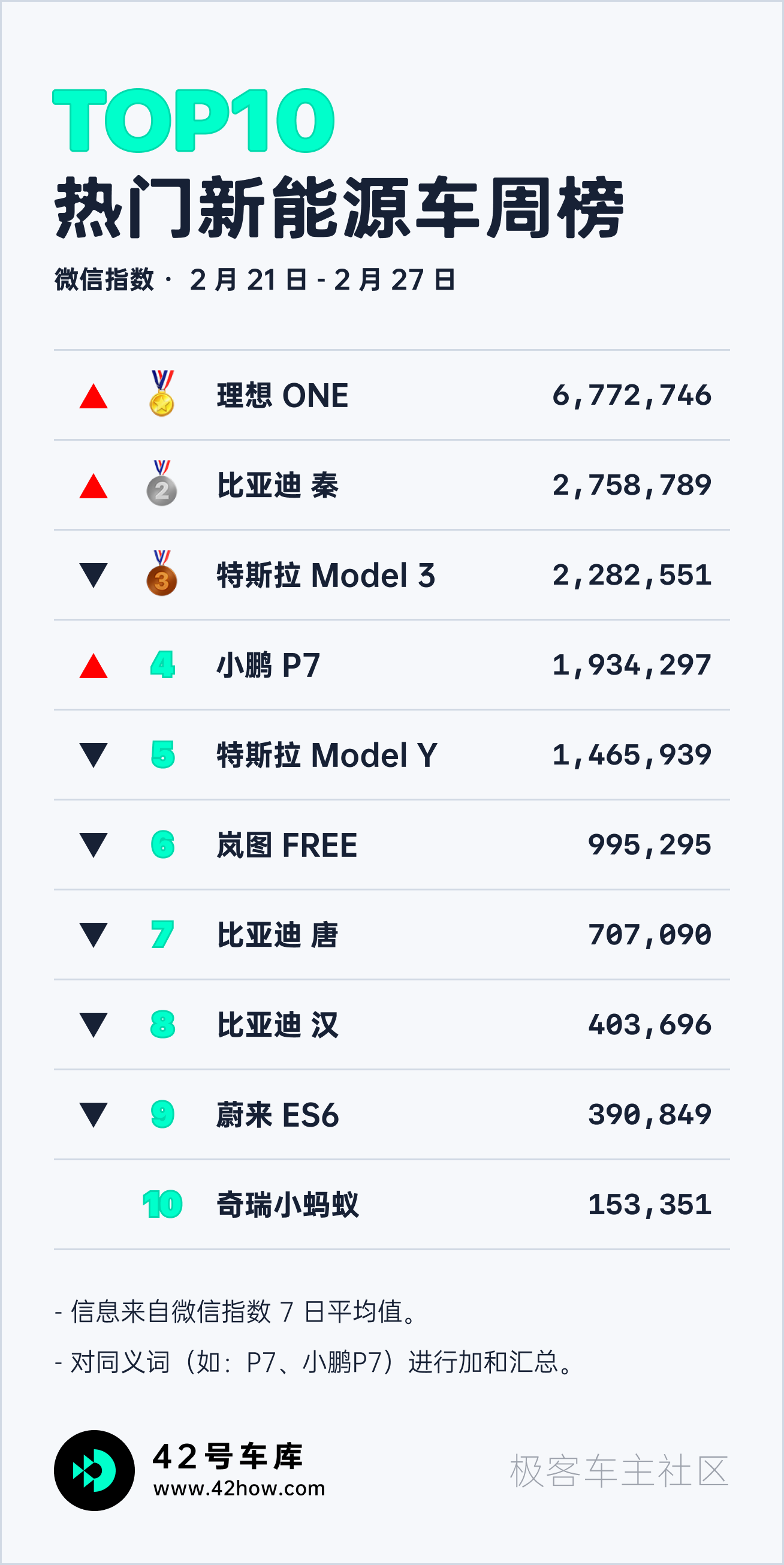
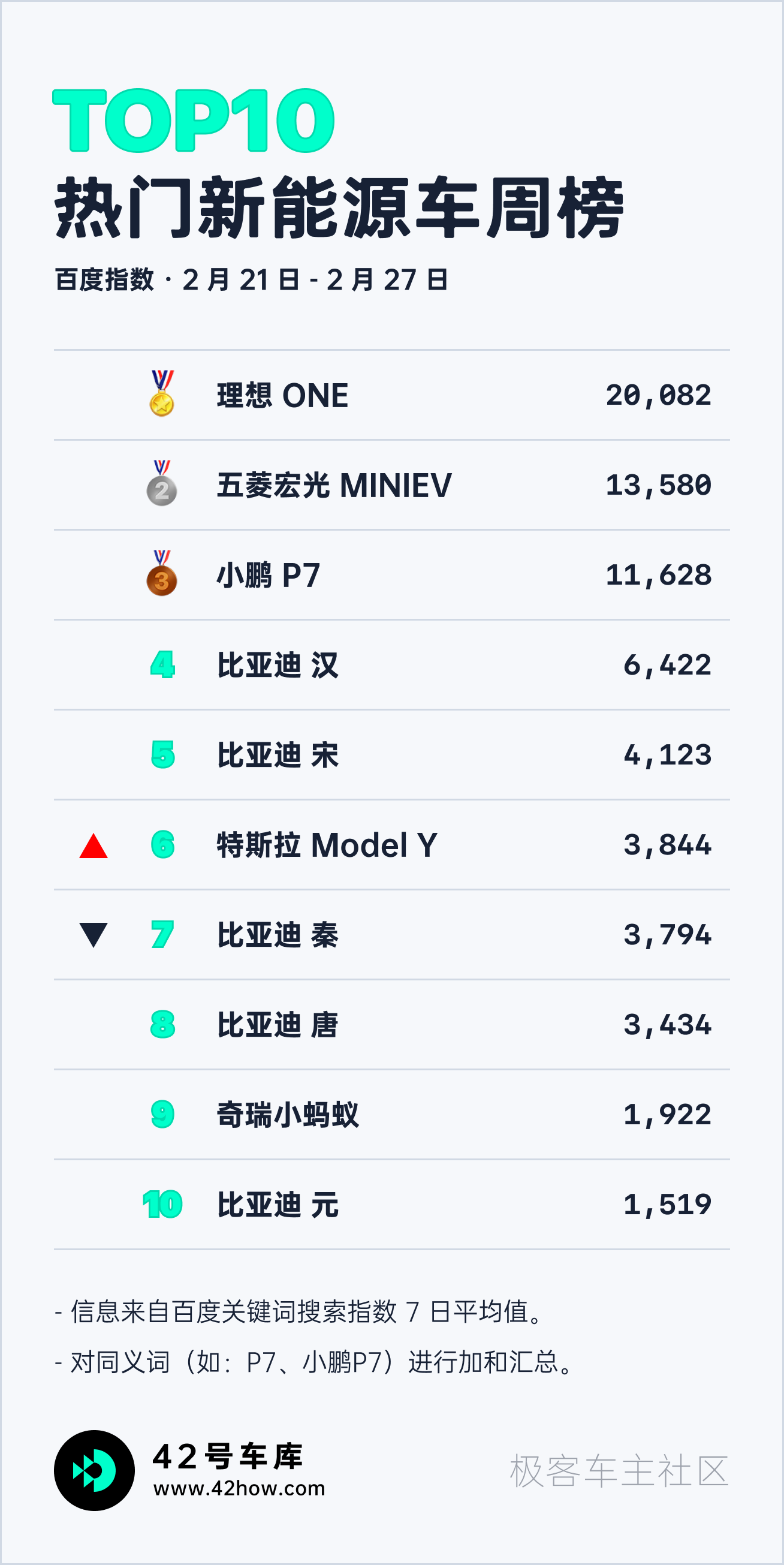
Weekly News
AITO WENJIE M5 Prices Announced, Ranging from RMB 249,800 to 319,800
On February 25, the final price of AITO WENJIE M5 was announced, with subsidized prices starting from RMB 249,800 for the standard rear-wheel drive version, RMB 279,800 for the all-wheel drive performance version, and RMB 319,800 for the all-wheel drive flagship version. Huawei’s home charging pile installation service package has a suggested retail price of RMB 8,000 nationwide, including a 7 kW/11 kW Huawei AC wall-mounted charging pile and basic installation service within 40 meters.
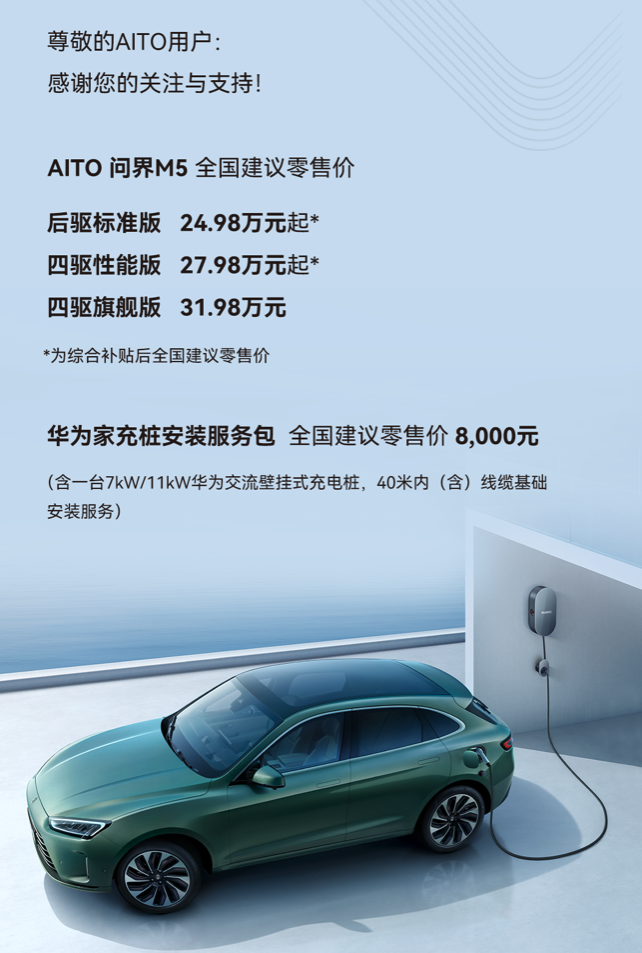
Below are the main features of AITO WENJIE M5:
-
AITO WENJIE M5 has a length, width, and height of 4,770 x 1,930 x 1,625 mm and a wheelbase of 2,880 mm. Compared to the length of BYD Han Huawei Smart Selection SF5, AITO WENJIE M5 is 70 mm longer and its wheelbase is increased by 5 mm, making it a mid-size SUV.
-
AITO WENJIE M5 adopts the HUAWEI DriveONE pure electric drive range extender platform, which consists of two motors and a range extender. The front axle is equipped with an asynchronous AC motor, while the rear axle is equipped with a permanent magnet synchronous motor. The peak power of the all-wheel drive performance version is 315 kW, and the peak power of the all-wheel drive flagship version is 365 kW. The acceleration of the flagship version can reach 4.4 seconds per hundred kilometers, while the acceleration of the standard rear-wheel drive version can reach 4.8 seconds per hundred kilometers.
-
With a 59 L fuel tank and 40 kWh battery, CLTC driving range can reach 1,242 km with the synergy of the three-electric system and the 1.5 T Miller-cycle range extender.- The first Huawei Harmony cockpit features a 15.6 inch screen with ultra-narrow bezels, achieving 2k resolution, 60 Hz refresh rate, and HDR display. It also has “zero-level design desktop” and “personalized Smart Dock” features, enabling “seamless transition” and Xiaoyi voice assistant;
-
The AITO Qianjie M5 has a total of 23 perception sensors in the vehicle hardware, including 3 millimeter-wave radars and 1 front-facing camera for assisted driving, 12 ultrasonic radars, 4 APA high-definition cameras, and an APA controller for 360 parking, as well as a CMS camera, a DMS camera, and a DRV camera.
Quick Review:
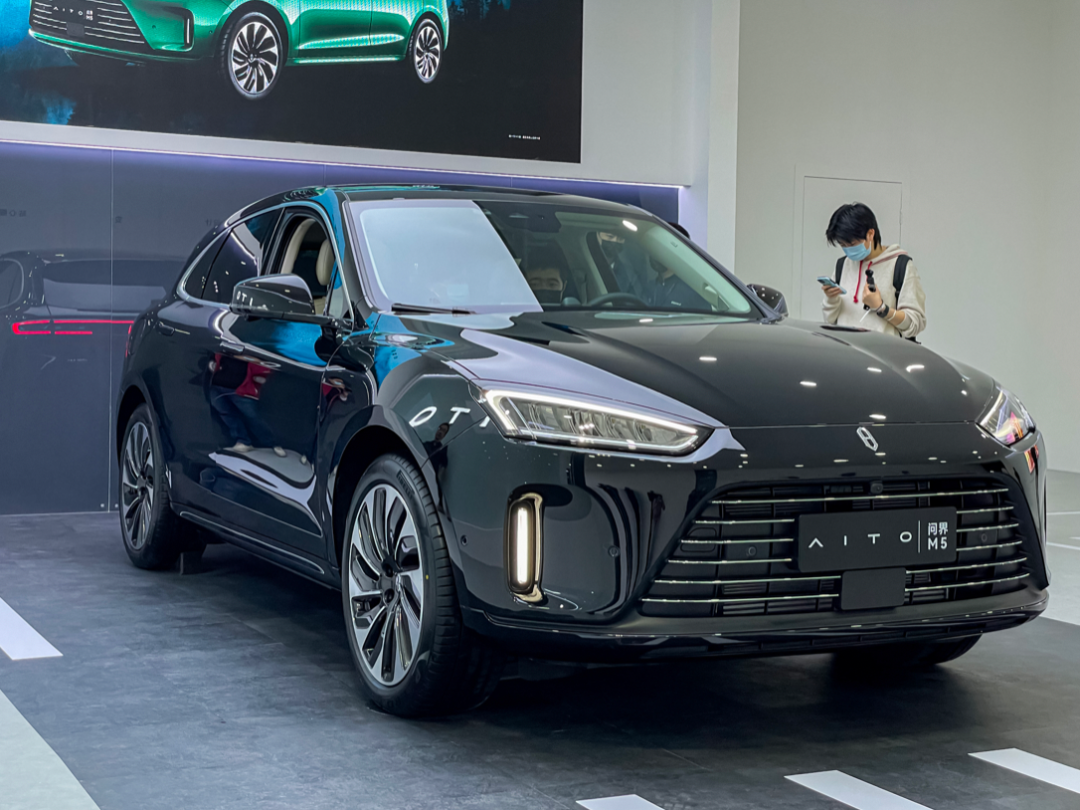
From the Huawei Smart SF5 to the AITO Qianjie M5, Huawei has gradually deepened its empowering influence on the Smart SF5. With the AITO Qianjie M5, we see that Huawei firmly controls product sales channels, function promotion, and even reservation channels.
The AITO Qianjie M5 is a vehicle model jointly created by Huawei and Smart. Previously, it was reported that the AITO Qianjie M5, which is about to start mass delivery in March this year, may have a delivery volume of up to 5,000 in March.
Further Configuration Information on the FlyingFish R7 Revealed
On February 23, the official website of FlyingFish Automobile opened to accept pre-orders for the R7, and so far only the appearance and part of the configuration information have been released. The prototype of the FlyingFish R7 will be unveiled in March this year, and it will be displayed at the Beijing Auto Show in April, with deliveries starting in July-August.
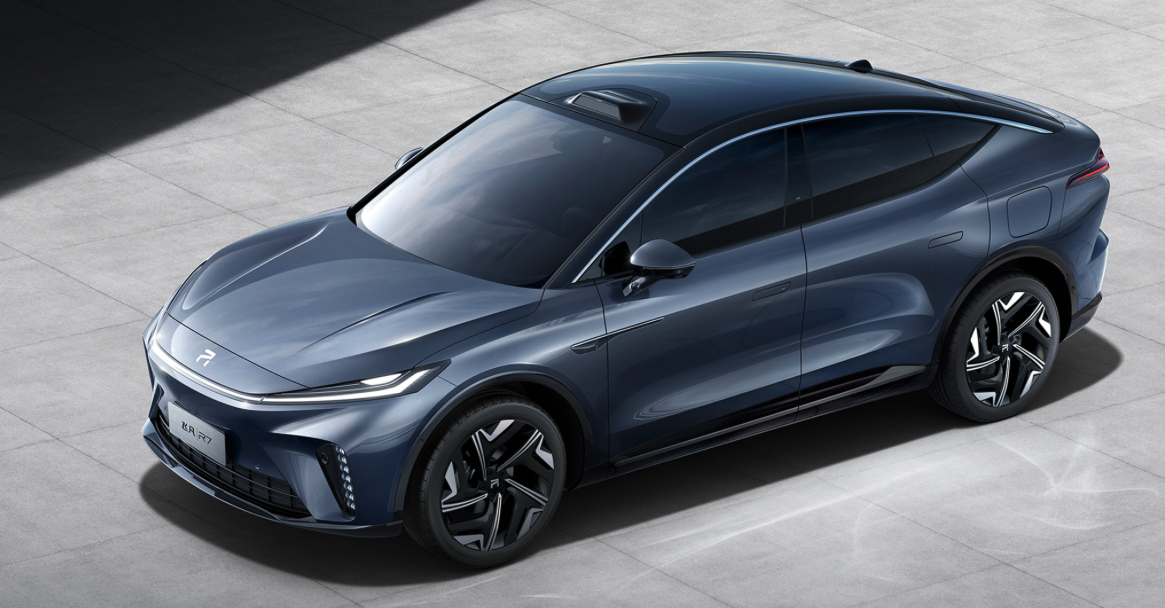
The FlyingFish R7 is the first independent model since the brand was established, and the new car is positioned as a mid-to-large size SUV, with the following specific information:
-
Length, width, and height: 4,900mm x 1,925mm x 1,655mm, with a wheelbase of 2,950mm;
-
With regard to perception hardware, the FlyingFish R7 has a total of 33 sensors, including Luminar’s laser radar (with currently the best field of view and detection distance), a 192-channel 4D mmWave radar from ZF, and also uses NVIDIA’s Orin autonomous driving chip.- In terms of intelligent cockpit, the FF R7 is equipped with Qualcomm 8155 chip, with interior featuring a 43-inch touchscreen and an AR-HUD with a 70-inch giant screen at a visual focus of 7.5 meters. The audio system uses BOSE’s 14-channel surround sound system and is the first domestic model to support BOSE EVSE engine sound simulation technology, claiming to simulate the sound effects of supercars such as Lamborghini.
-
In terms of electric motors, FF claims that the maximum power of the four-wheel-drive model is 400 kW, the maximum torque is 700 N·m, and the acceleration from 0 to 100 km/h is about 4 seconds. Moreover, the motors of the FF R7 adopt oil cooling technology, which performs better in heat dissipation during intense driving.
-
The official battery capacity is undisclosed, but two battery options will be provided when the car is launched. The high-end version is estimated to have a range of 600+ km with a battery capacity of 90-100 kWh.
-
The FF R7 supports fast battery swapping, and the whole process can be completed in as little as 2.5 minutes, according to the official statement. In the future, the company will also consider the separation of car and battery.
Quick Comment:
At the Co-creation conference, FF CEO Wu Bing announced that the delivery target for the FF R7 this year is 10,000 vehicles. The company also plans to launch at least one new model each year from 2022 to 2025, covering core markets such as sedans, SUVs, and MPVs. By 2025, FF aims to become a profitable premium intelligent electric vehicle company.
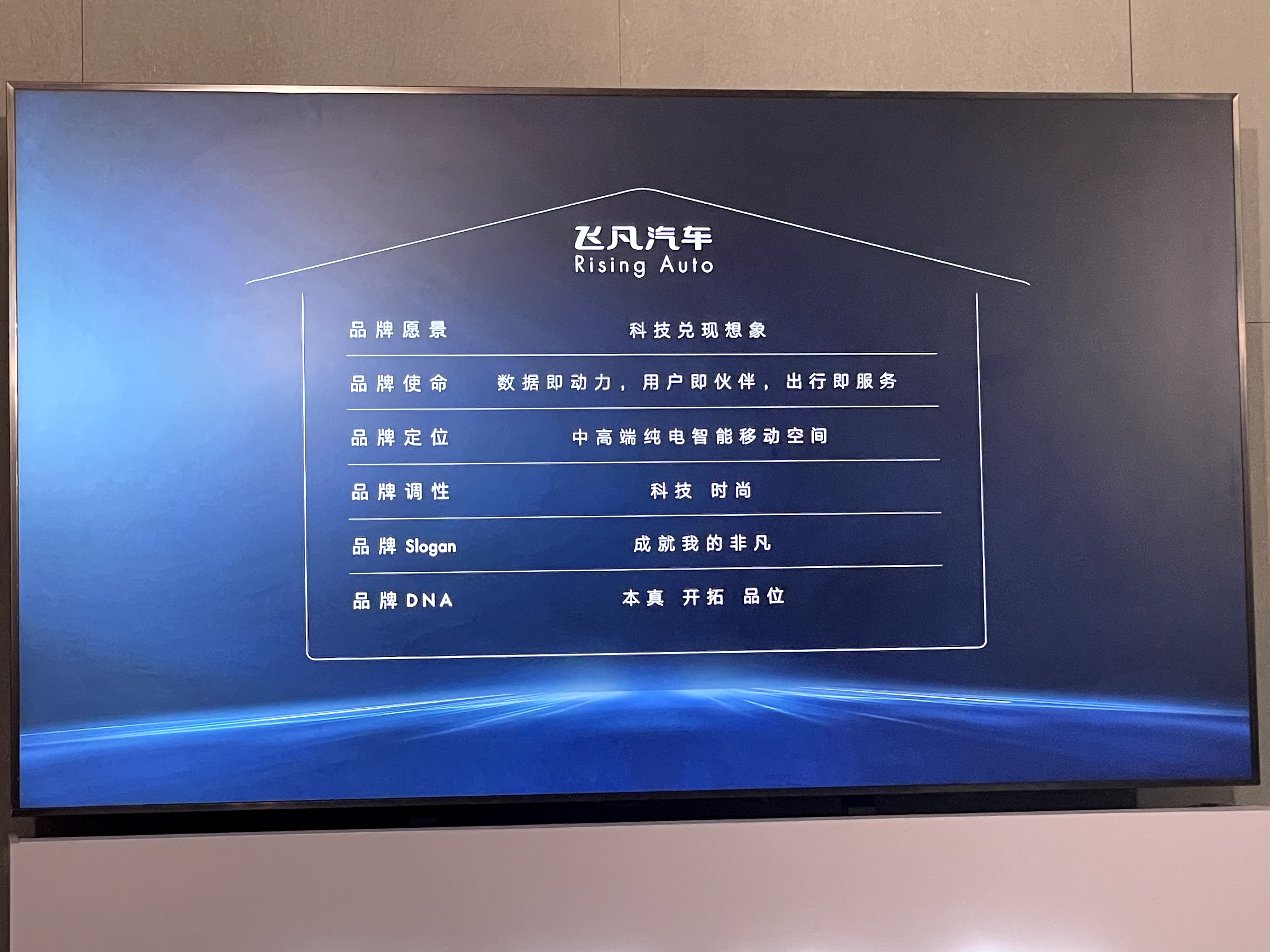
The combination of independent asset operation and co-creation concept gives FF enough energy to focus on user experience without overly worrying about research and production capabilities. However, the biggest problem right now is that the previous models released by SAIC R, the predecessor of FF, such as the compact sedan ER6 and MARVEL R, did not perform well. We look forward to seeing whether FF will provide answers to these issues at the FF Auto Carnival next month.
Ideanomics 2021Q4 Financial Report: Record High Deliveries, 20% Gross Margin, and Revenue of 10 Billion
On February 25, Ideanomics officially released its 2021Q4 financial report and 2021 annual report. Driven by the significant growth of the new energy vehicle market in 2021 and the launch of the revamped Ideanomics ONE, the company achieved a 177.4% year-on-year increase in deliveries in 2021, with Q4 being the quarter with the highest deliveries in Ideanomics’ history, setting multiple new records for the quarter.
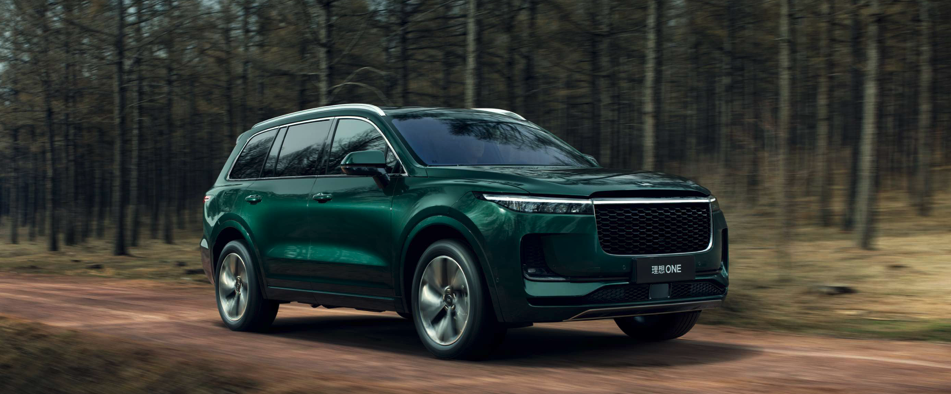
The following are the main highlights of the 2021Q4 financial report.- The total revenue in Q4 2021 was RMB 10.62 billion, reaching a new quarterly high and increasing by 156.1% compared to RMB 4.15 billion in Q4 2020, with a QoQ growth of 36.6% compared to Q3 2021.
-
As of December 31, 2021, the company’s cash reserves (cash and cash equivalents, restricted cash, and balance of term deposits and short-term investments) were RMB 50.16 billion, compared to RMB 48.83 billion in Q3 2021.
-
The R&D expenses of Ideanomics in Q4 2021 were RMB 1.23 billion, an increase of 38.4% compared to RMB 0.8885 billion in Q3 2021, accounting for 11.58% of the total revenue for the quarter.
Below are the main financial data for 2021:
-
The net profit was RMB 5.76 billion, an increase of 271.9% compared to RMB 1.55 billion in 2020.
-
R&D expenses were RMB 3.29 billion, an increase of 198.8% compared to RMB 1.10 billion in 2020. The increase in R&D expenses was mainly due to the increase in R&D personnel and the development of new products.
-
General selling and administrative expenses were RMB 3.49 billion, an increase of 212.1% compared to RMB 1.12 billion in 2020, mainly due to the increase in employee compensation and expansion of sales network.
-
As of December 31, 2021, Ideanomics had 11,901 employees.
Q&A section:
-
Ideanomics will make up for its shortcomings in the future. There are self-developed teams for domain controllers and electronic and electrical architecture coming up.
-
The key to Ideanomics’ BEV product line is the 4C power battery, which requires a lot of R&D. Because the supply chain is not yet mature, including the 850V voltage platform, the corresponding electric drive system also needs a lot of in-depth research. Ideanomics is also developing a 400kW charging pile, which can combine several items to achieve a 10-minute charging ecosystem of 400 km.
-
In the initial Ideanomics ONE project, there were 2 million households with an income above RMB 200,000. Now it has grown to 6 million and is expected to reach 10 million by 2025. We will continue to deepen our presence in this market. Currently, Ideanomics only has a market share of just over 2% in the household user market, with plenty of room for improvement. We need to reach a market share of 20-25% to complete our journey from 1 to 10.
Review:
2021 was the year when Ideanomics completed its journey from 0 to 1. As the first new energy vehicle to break the 10,000 monthly sales mark, Ideanomics ONE has proven itself in the market and changed some people’s perception of Ideanomics. However, it’s not yet time to celebrate. As Li Xiang said, Ideanomics currently only has a market share of just over 2% in the household user market.# Ideal’s R&D and R&D expenses as a percentage of revenue shine brighter than revenue, gross profit, and net profit in the 2021 financial report. The shortfalls in self-developed technology are being gradually made up with planning and strategy. In 2022, when everyone competes on the same stage, we may once again see an extraordinary Ideal.
NIO’s first vehicle model, the ET7’s specific configuration information is announced
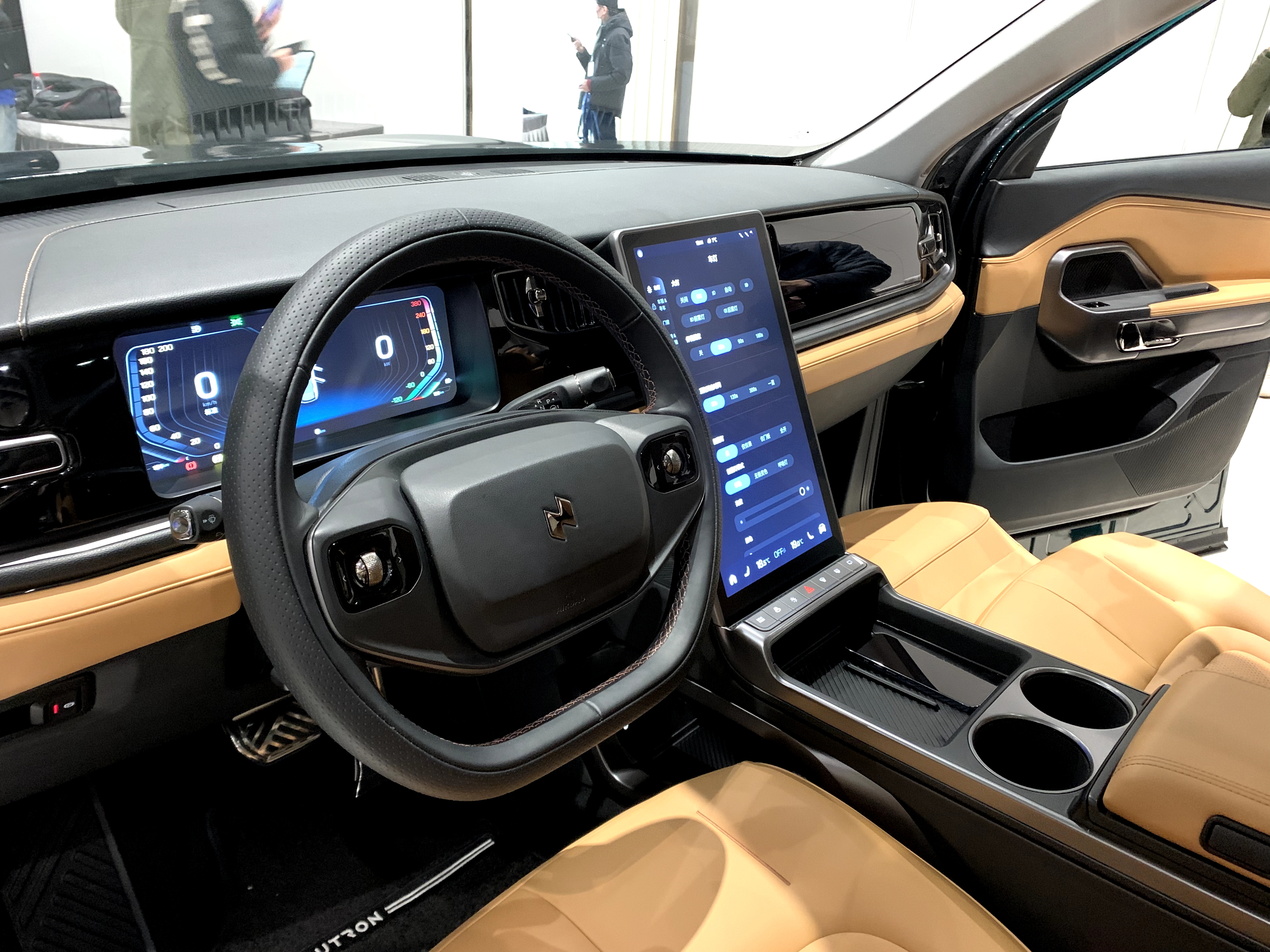
On February 25th, NIO announced the exterior, interior, and some features of the ET7:
-
The body length, width, and height are 4,915 x 1,962 x 1,745 mm, with a wheelbase of 2,910 mm. Equipped with high-strength off-road tires with an OD value of 788 mm. The power system is a dual-motor four-wheel drive, with 0-100 acceleration in 5.9 seconds;
-
When charging, the C-pillar displays a “power bar” indicating the battery percentage. The taillight structure has no seams and is integrated into the vehicle;
-
External output of 220 V, with a maximum power output of 6 kW, and a conventional output power of 3.3 kW at 220 V;
-
The maximum volume of the flat-folding rear trunk is 1,730 L, and under normal conditions, it has 788 L with 70 L of hidden space below;
-
The seats are made of Nappa leather and use a suspension tightening technology to increase fit and reduce stitching. The seats feature wide headrests, with the front seat cushion length measuring 525 mm and the front legrest able to fold out 180 degrees with a maximum rest angle of 130 degrees. The rear seat cushion length is 520 mm;
-
The driver and front passenger each have a mini LED screen next to their air outlet to display air conditioning information, including outdoor air quality and indoor temperature.
-
The panoramic sunroof has an 83% thermal barrier and a 99% ultraviolet resistance rate. The sunroof contains a safety crossbar in the middle but is otherwise made of one piece of glass;
-
The front and rear windshields have double-layer laminated glass, reducing noise by 12% compared to regular vehicles, and reducing high-frequency noise such as wind noise by 50%;
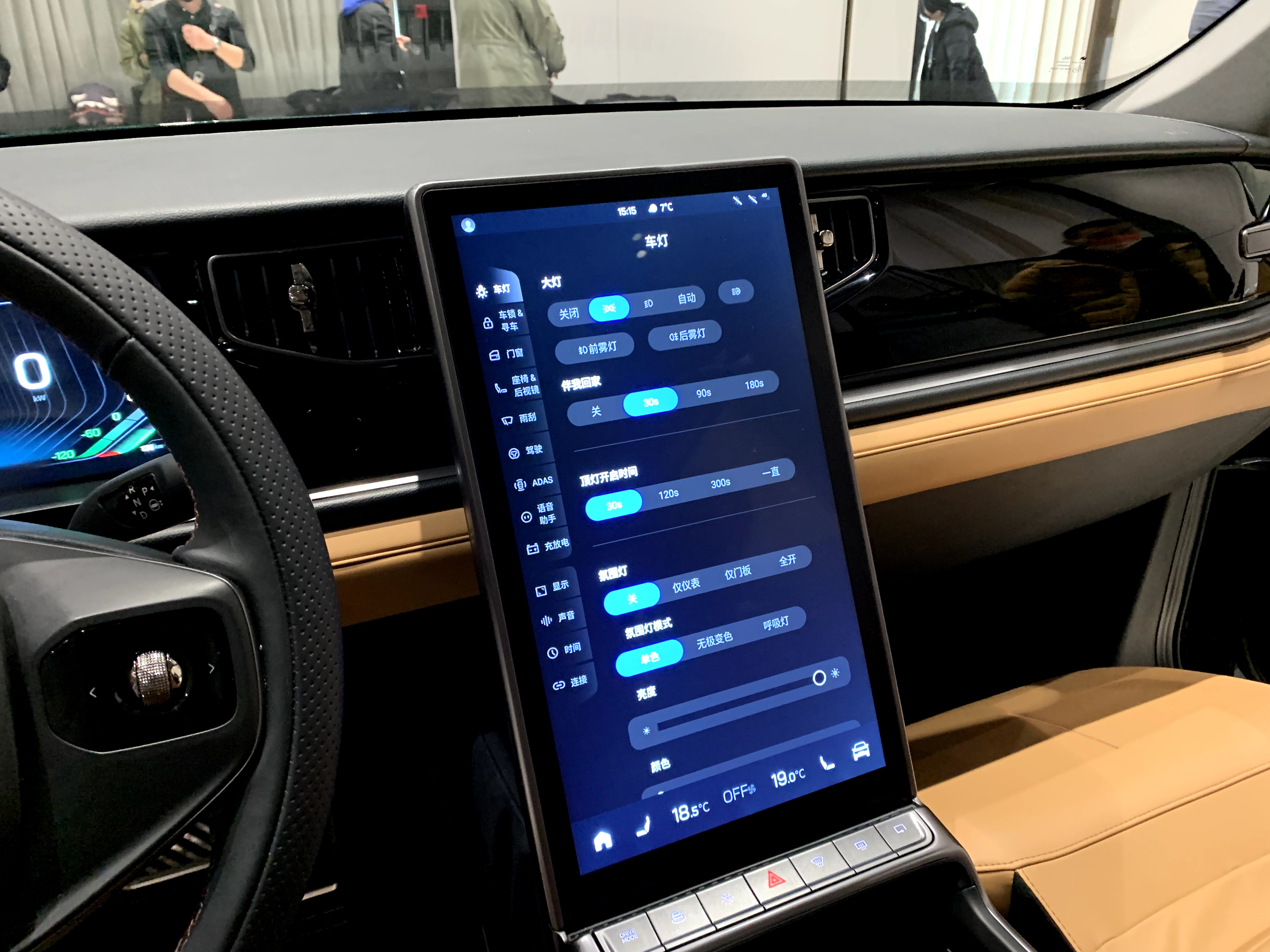
-
The central control adopts a large amount of rounded corner designs, and the interior uses a lot of chrome designs to add a sense of luxury. The dashboard is wrapped in a single piece of leather without seams;
-
Equipped with 6 linear motors, the central control screen has tactile linear vibrations similar to an iPhone and supports CarPlay.- 15 speakers throughout the car, supports 5.1,7.1 channels, and has four sound zone microphones.
-
The front row has two 15W wireless charging pads, and there are a total of 4 Type-C interfaces in the car, with the front two supporting data transfer with a power of 10W each. The back two support 18W quick charging and there are three 12V cigarette lighter interfaces.
-
Supports app and Bluetooth unlocking.
Quick Review:
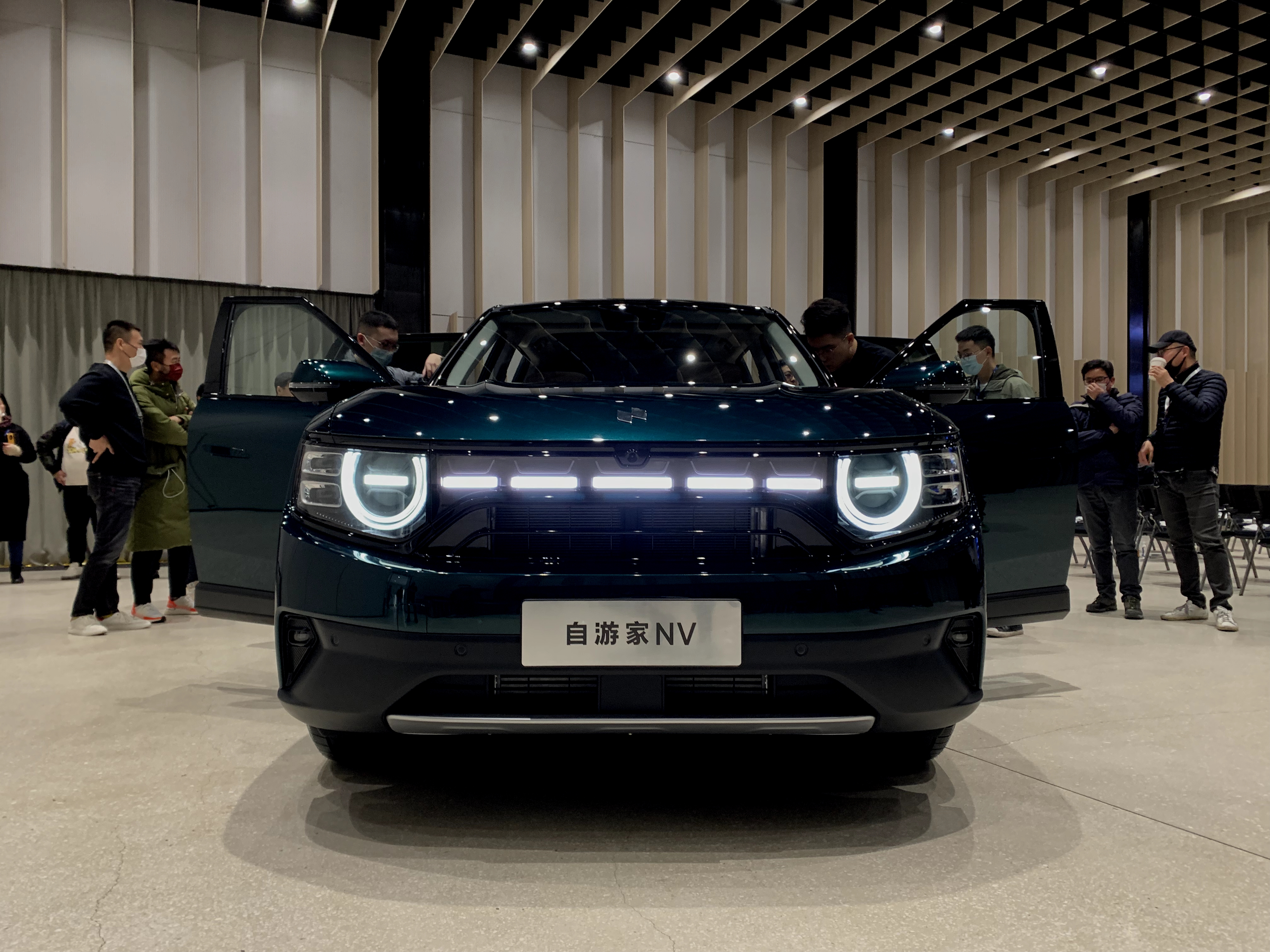
The NiuChuang ZiyuJia NV plan to start deliveries at the end of September. While most of the car’s exterior and interior have been exposed, and it has not announced the specific sale price yet, it is positioned as a luxury car with a price above 300,000 yuan. NiuChuang ZiyuJia NV faces many competitors such as the extended-range Ideal ONE and Voyah FREE, and the pure-electric Nio EC6/ES6, all of which have strong product appeal.
Looking forward to seeing how the NiuChuang ZiyuJia NV performs in terms of assisted driving and driving experience.
Nissan Leaf Upgrade, WLTP Endurance 385km, supports e-Pedal
The 2022 Nissan LEAF will launch new wheels, a new Nissan logo, and a new exterior color. The new car will be equipped with NissanConnect information entertainment system, which also has Android Auto and Apple CarPlay connectivity functions.
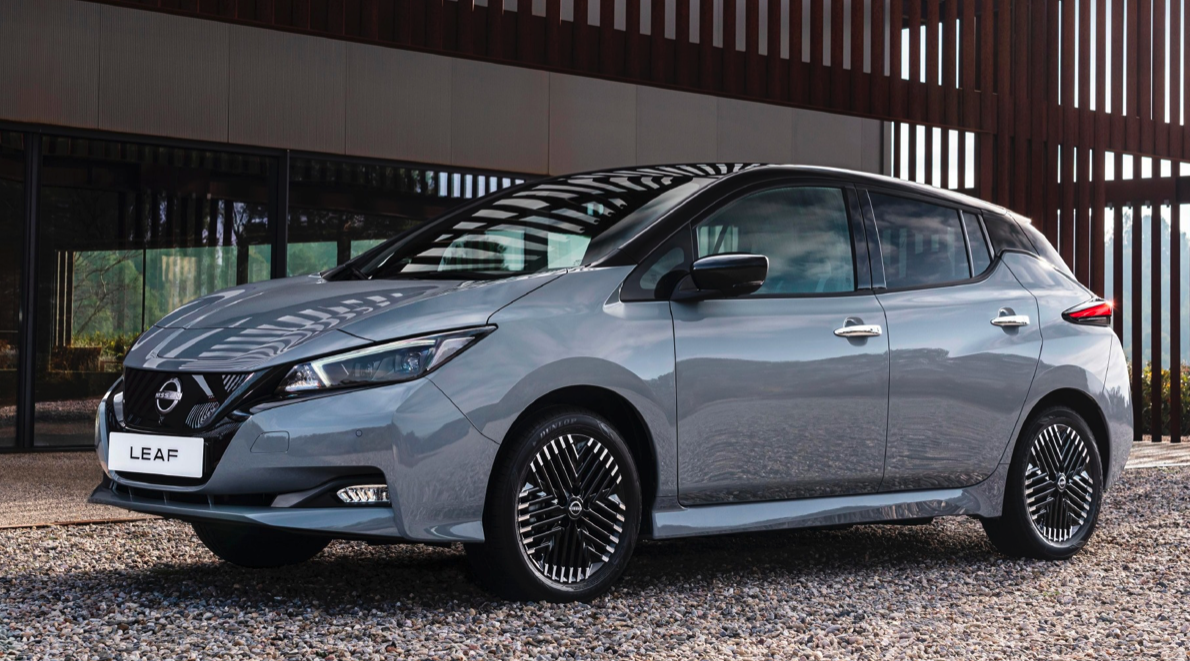
In terms of intelligent driving, the new car has added an adaptive cruise control system called ProPilot, which can achieve automatic follow-up. In addition, the new car also supports e-Pedal single pedal driving. However, it still uses CHAdeMO charging interface (the charging protocol led by Nissan and Mitsubishi, mainly used in Japanese vehicles).
Nissan LEAF offers two battery packs, 40kWh and 62kWh. The 40kWh battery pack has a WLTP range of 270 km, and the 62kWh battery pack has a WLTP range of 385 km.
Nissan Leaf is Nissan’s only pure electric product in the global market. It was introduced as early as 2010 and was one of the best-selling models in overseas electric vehicle markets before Tesla’s Model 3 was introduced.
Quick Review:
It’s puzzling that Nissan entered the new energy market early, but has been slow to launch new electric products.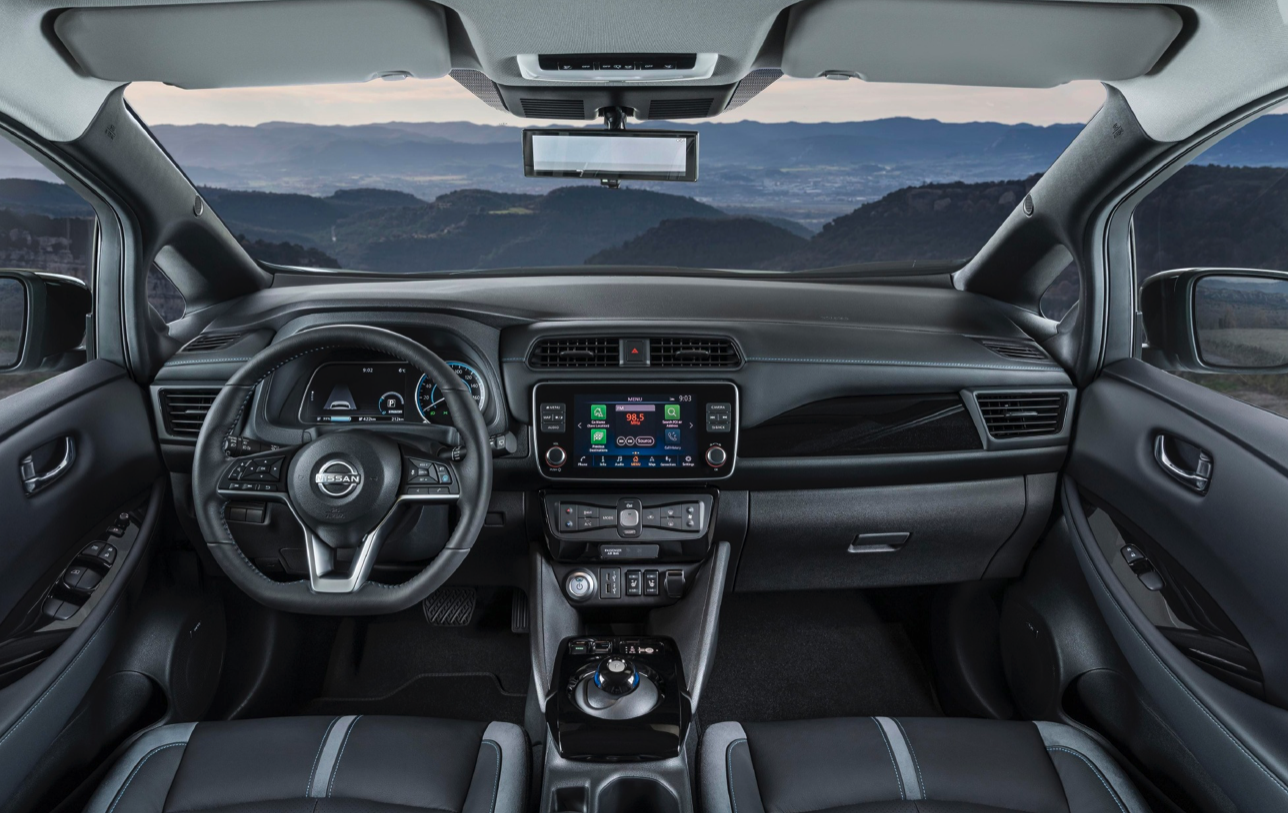
In the Ambition 2030 plan announced earlier, Nissan wrote that by 2030, it will launch 23 electrified new models, including 15 completely new electric vehicles. The goal is for 50% of revenue to come from electrified vehicles by 2030. In the next five years, Nissan will also introduce 20 brand-new electric vehicles along with models featuring e-POWER technology.
At that time, will Nissan be able to regain its market share? We’ll have to wait and see.
This article is a translation by ChatGPT of a Chinese report from 42HOW. If you have any questions about it, please email bd@42how.com.
